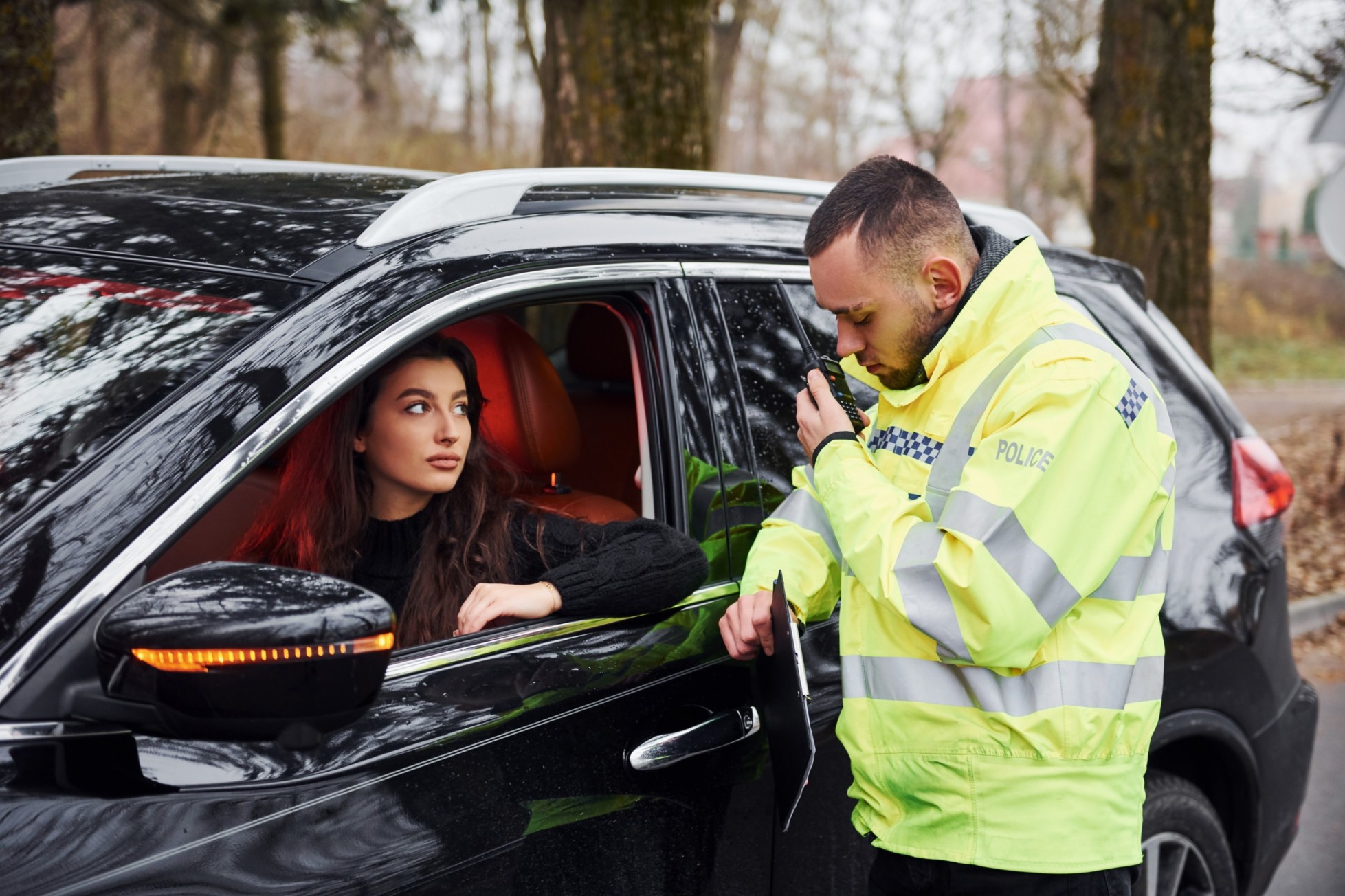Chris Simons, Kansas City Traffic Lawyer, Named Top Contributor by Avvo
How Kansas City Police Apply Time-Distance Measurement in Traffic Stops

Speed enforcement in Kansas City doesn’t always rely on radar or laser guns. Police officers sometimes employ a simple yet trusted method known as time-distance measurement. This approach uses basic math and observation to calculate a driver’s speed without special tools.
At Speeding Ticket KC, we know how this method works — and how errors can affect speeding tickets in court. Understanding how time-distance measurement is applied can help you know your rights if police stop you.
What Is Time-Distance Measurement?
The idea behind time-distance speed measurement is simple. It’s based on the formula:
Speed = Distance ÷ Time.
Police officers watch a vehicle travel between two fixed points, such as road markings, poles, or signs. They record how long the car takes to go from one point to the other. Then they calculate the average speed.
For example, if a car covers 100 feet in 1.5 seconds, the officer can use math to find the car’s speed in miles per hour.
Why Kansas City Police Use This Method
While radar and laser tools are common, Kansas City officers still use time-distance methods for several reasons:
1. It works without radar equipment.
Officers can use it when radar or laser guns are unavailable or not working.
2. It’s reliable in different conditions.
Radar may fail in heavy rain, snow, or near reflective surfaces. Time-distance isn’t affected by those factors.
3. It’s easy to verify in court.
The officer can explain exactly how they watched and timed the car’s movement.
This makes the time-distance method a valuable backup for enforcing speed laws across Kansas City roads.
How Officers Use Time-Distance Measurement During Traffic Stops
Kansas City police use two main ways to apply time-distance checks: from the ground or from the air.
1. Ground-Based Timing
Officers use visual markers like utility poles or painted road lines. When a car crosses the first marker, the officer starts a timer. When it passes the second marker, the timer stops. The distance and time are compared to calculate speed.
This approach often works best on highways or long open roads.
2. Aerial Timing
In some cases, aircraft patrols are used. Officers in planes or helicopters mark distances on the highway. They observe cars from above, record the time between two points, and radio ground units to stop the driver.
Both methods depend heavily on accuracy and the officer’s training. A mistake in timing or distance can lead to wrong speed readings.
Tools Used for Time-Distance Measurement
Even though this method can be done manually, police use tools to make it more precise. Common tools include:
- Stopwatches for manual timing.
- Electronic timers connected to vehicle systems.
- Video-based systems that track vehicles automatically.
The choice depends on the patrol type, road location, and visibility.
At Speeding Ticket KC, we often review these timing devices in court cases. If a tool was not calibrated or properly used, the reading may be unreliable.
The Importance of Officer Training
Kansas City police officers who use time-distance speed checks must be trained in this method. They learn to:
- Measure road distances accurately.
- Use timers or stopwatches correctly.
- Focus on one vehicle at a time.
- Adjust for reaction time when starting or stopping the timer.
- Record observations clearly.
In court, an officer must show proof of training and explain the exact process they followed.
If that proof is missing or unclear, the speeding charge may not stand. Speeding Ticket KC reviews officer training logs as part of every defense.
How Accurate Is Time-Distance Speed Measurement?
When done correctly, it can be accurate. But human error can affect the result. A small delay when starting or stopping the timer can change the speed of reading by several miles per hour.
For example, if the officer reacts a half-second late, it could mean a difference between legal and illegal speed.
Other factors that may affect accuracy include:
- Incorrectly measured distance markers.
- Poor visibility at night or in bad weather.
- Heavy traffic is blocking the officer’s view.
- Timing equipment malfunction.
Our team at Speeding Ticket KC often finds these issues when reviewing traffic stop reports.
What Happens During a Time-Distance Traffic Stop
If a Kansas City officer believes you were speeding based on time-distance measurement, you’ll be pulled over like any other stop. The officer may explain how they observed your vehicle and how fast they recorded you traveling.
You have the right to ask questions about:
- The distance used.
- The timing device.
- The officer’s training.
Keep calm and be polite. Don’t argue on the roadside. You can challenge the accuracy of the reading later in court with the help of Speeding Ticket KC.
How Time-Distance Evidence Is Used in Kansas City Courts
Kansas City courts accept time-distance readings as valid if officers follow all procedures. The prosecutor must prove that:
- The officer measured the distance correctly.
- The timing was accurate.
- The officer was properly trained.
If any of these are in doubt, the evidence can be challenged.
Speeding Ticket KC examines all records — from officer notes to measurement logs — to find weak points in the case. Missing or unclear documentation often leads to ticket dismissal or reduction.
How Speeding Ticket KC Challenges Time-Distance Speeding Cases
Our defense team has handled many speeding cases based on time-distance evidence. Here’s how we approach them:
- Review all evidence, including timing, distance, and officer notes.
- Check for calculation errors that could change the speed result.
- Question officer training and whether proper methods were followed.
- Analyze road layout for visibility or traffic issues.
- Look for missing or unreliable proof in the police report.
Even small details can make a big difference. We make sure every part of the case is examined for fairness and accuracy.
Common Mistakes That Affect Time-Distance Readings
Mistakes happen more often than people think. Here are a few that can affect a speeding case:
- The officer started timing late or early.
- The car was changing lanes or slowing down.
- The wrong vehicle was tracked.
- Distance markers were mismeasured.
- Notes were written after the stop, not during.
These errors can make the time-distance result unreliable. Speeding Ticket KC uses these findings to build strong defenses for clients.
What Drivers Should Do After Receiving a Time-Distance Speeding Ticket
If you get a speeding ticket based on time-distance measurement, don’t just pay it right away. You have options.
- Read the ticket carefully.
- Write down what you remember about the stop.
- Contact Speeding Ticket KC before your court date.
We can review the details and determine if the ticket can be challenged. Paying without a review might mean higher insurance rates and points on your record.
Why Choose Speeding Ticket KC
At Speeding Ticket KC, we focus on traffic defense — especially speeding cases. We understand how Kansas City police apply time-distance methods and how small mistakes can lead to false readings.
When you work with us, you get:
- A full review of all evidence and timing data.
- Experienced traffic attorneys who know local court rules.
- Honest advice about your best options.
- A strong defense aimed at protecting your license and record.
We’ve helped many Kansas City drivers reduce or dismiss their speeding charges.
Frequently Asked Questions (FAQs)
1. What does time-distance measurement mean in a speeding stop?
It’s a method where officers measure how long it takes a car to travel a set distance to estimate speed.
2. Can I fight a speeding ticket based on time-distance?
Yes. Speeding Ticket KC can challenge timing errors, poor measurement, or a lack of officer training.
3. Is this method used more than radar in Kansas City?
Not usually. Radar is more common, but time-distance is used in certain areas or when radar fails.
4. What happens if the officer’s timing was off?
A small timing error can change the speed of reading. That can make the ticket unreliable in court.
5. Do officers need special training for this method?
Yes. Kansas City officers must complete certified training before they can use time-distance speed enforcement.
Final Thoughts
Time-distance measurement may look simple, but it requires precision. Kansas City police use it when radar or laser tools aren’t ideal. Still, errors in timing or measurement can lead to unfair tickets.
Speeding Ticket KC has experienced Kansas City traffic lawyers who help drivers challenge those mistakes. We examine every detail of your case and work to protect your record.
If you’ve been stopped for speeding based on time-distance measurement, contact Speeding Ticket KC today for a free case review.

